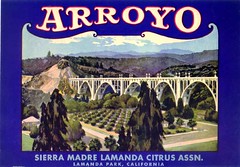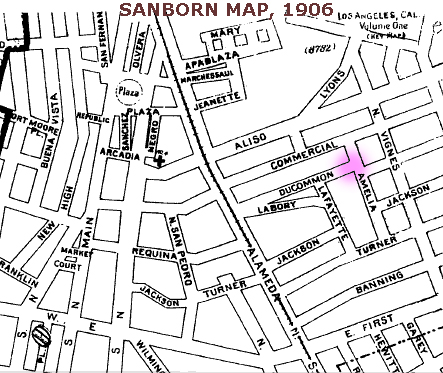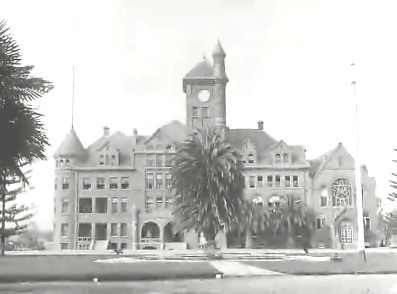As I began to write my grand opening about Los Angeles in 1907, I felt a ghostly hand pluck ever so gently at my sleeve.
“Promise me, dear boy, you”™ll remember to say that women couldn”™t vote in 1907.”
“Yes, of course.”
Now where was I? Ah yes. The street names are deceptively familiar: Broadway, Spring Street and Main. But stand up on Bunker Hill and look at the city below and you might pick out the Bradbury Building and the Alexandria Hotel. Maybe the Pan American building at Broadway and 3rd Street, kitty-corner from the Bradbury and currently undergoing loft conversion, and the Rosslyn Hotel on Main.
Nothing remains of the old City Hall on Broadway but the parking lot between the Los Angeles Times garage and Victor Clothing, otherwise known as the Hosfield Building, erected as an annex for city offices in 1914 and opened in 1915 as City Hall South.
There are no freeways in this alien city. No television, no radio (or “wireless” as it was previously known) and no movie theaters. There aren”™t even any comic strips in The Times, let alone crossword puzzles. Luckily, the operatic repertoire hasn”™t changed greatly; Angelenos in 1907 could hear “Carmen” and “La Traviata.”
The ghostly hand intruded again, a bit more forcefully.
“Dear boy, remember about women not being able to vote?”
“I”™ll get to that.”
There are a few automobiles (or “machines” as they were called) sold by dealers who set up shop on South Main around 12th Street. Reo, Rambler, Jackson, Pope-Toledo, Stevens-Duryea and Overland. Buick, Cadillac, Oldsmobile and Packard are the only familiar names. But machines seem only a bit more common than Segways are today. There are no more than 30 cars listed for sale in The Times classified ads for March 14, 1907, far outnumbered by horses; buggies and wagons, streetcars and bicycles appear to be the main modes of transportation.
Sample ad:
POPE-TOLEDO 24-H.P. TOURING CAR
with touring car body, canopy top and run-
about body. This car has just been thoroughly
overhauled and is in first-class condition.
The BIGGEST bargain offered in
Los Angeles
$1,000 ($20,523.57 USD 2005)
Western Motor Car Company
415 S. Hill
Patent medicine, séances, licensed saloons and something called a blind pig. The pages of The Times are brimming with vintage malfeasance.
“Ow! You don”™t need to pinch me.”
“Dear boy, women”™s suffrage?”
“Very well.”
Women in Los Angeles couldn”™t vote until 1911, when a new law allowed them to cast ballots in the local elections. The 19th amendment, granting women”™s suffrage, was ratified by California on Nov. 1, 1919, and proclaimed by the secretary of State on Aug. 26, 1920. (Not passed by Mississippi until March 22, 1984? Are you serious?)
“I”™ll even mention suffragette Rachel Foster Avery”™s visit in August 1907. How”™s that?”
“Thank you.”

 March 22, 1907
March 22, 1907

